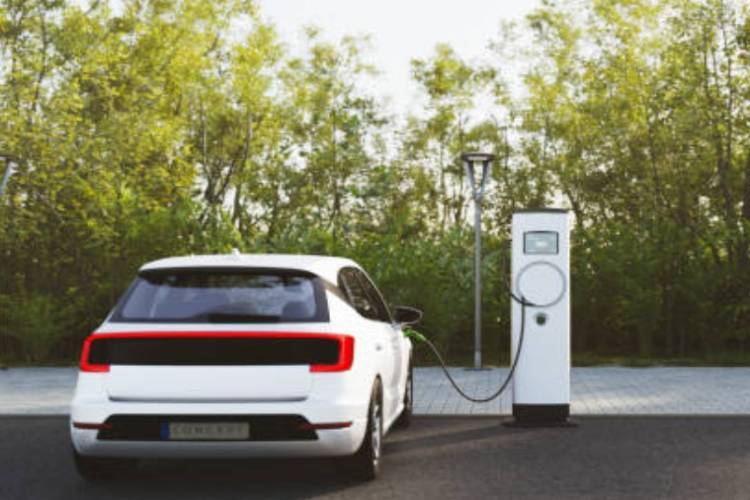
India’s push toward a greener transport future is gaining urgency. With worsening air pollution, ballooning oil import bills, and a growing climate imperative, electric vehicles have become central to the country’s clean energy transition. Yet, despite generous government subsidies, regulatory incentives, and an expanding range of EV models, the average Indian consumer continues to prefer conventional petrol and diesel cars.
A new nationwide study sheds light on this puzzling trend. The key insight: although EVs are cheaper to operate in the long run, most consumers fail to value those future savings enough to justify the higher upfront cost. Economists refer to this as the “energy efficiency paradox”—a disconnect where individuals avoid adopting cost-effective, energy-saving technologies because of short-term thinking.
READ | China FDI: Dip in inflows may force a policy rethink
The mental math of buying an EV
In a survey of over 600 prospective car buyers across India, the researchers found that consumers apply an internal discount rate of nearly 60% when considering an EV purchase. Put simply, even if an EV promises to save ₹1 lakh annually in fuel and maintenance, those benefits are mentally discounted to such a degree that they carry little weight in decision-making.
This is particularly striking when compared with prevailing market interest rates. Car loans in India typically carry interest rates of 7–8%, yet consumers behave as if the future has an effective cost eight times higher. The psychological distance from long-term benefits reduces their salience, rendering the EV’s lifetime value less compelling.
When information fails to register
One of the most telling findings of the study is how consumer inattention shapes the market. Many buyers admitted to not actively seeking information about EVs. When asked if they wished to learn more, a large number responded with indifference. This lack of engagement had a tangible effect: those less curious about EVs were 10.4% less likely to consider purchasing one.
This points to a clear opportunity. If automakers and policymakers step up targeted communication — not just about environmental benefits, but also about concrete cost savings—they could shift consumer perception. EVs must be framed as not only sustainable but also financially savvy investments.
The weight of uncertainty
For many buyers, EVs remain an unfamiliar and therefore risky proposition. Doubts about battery life, limited charging infrastructure, and uncertain resale value are enough to deter purchase. The study found that a single-level increase in risk aversion reduced the likelihood of EV adoption by 6.9%.
Buying a car is a high-stakes decision. To ease buyer anxiety, manufacturers need to offer robust warranties, ensure dependable after-sales service, and make battery health transparent. On its part, the government must accelerate the rollout of visible, reliable charging stations—especially in urban centres.
The influence of peer perception
In India, the car is more than a utility — it’s a marker of status. The study found that peer approval significantly influences purchase decisions. A one-level increase in perceived social support for EVs raised the likelihood of adoption by 9.9%.
This reveals the value of social visibility. As EVs gain traction among professionals, influencers, and early adopters, the aspirational value of green vehicles will rise. Campaigns that brand EVs as premium, modern, and future-ready could amplify their appeal among middle-class buyers.
Electric vehicles: Calculating the green premium
Despite their hesitations, Indian consumers are not unwilling to pay more for cleaner technology—up to a point. The study found that most buyers are willing to pay ₹1.7–2.3 lakh more for an EV over a petrol car, provided it delivers annual savings of ₹1 lakh. However, this willingness to pay drops sharply in consumers who are inattentive or risk-averse.
The implication is clear: better communication and reduced uncertainty could significantly expand the addressable market for EVs. By reframing EVs as prudent financial choices rather than costly green alternatives, manufacturers and policymakers can align consumer psychology with policy goals.
Closing the gap between policy and perception
India’s EV transition will ultimately hinge on whether policy interventions can correct the distortions in consumer perception. Reducing the upfront cost gap must remain a priority. This could be achieved through a mix of targeted subsidies, tax rebates, or concessional loans that make EVs financially competitive at the point of purchase. Lowering this initial barrier is essential to drawing more middle-income consumers into the market.
Simultaneously, a national campaign to improve EV literacy is overdue. Advertising that emphasises total cost of ownership, not just the sticker price, must become the norm. Engaging social media platforms, influencer networks, and public figures can lend credibility and reach to these messages. The goal should be to make EVs not only aspirational but also self-evidently economical.
Infrastructure, meanwhile, remains the weak link. Government investments in fast-charging stations — especially in tier-1 and tier-2 cities — can directly address the range anxiety that still holds back many buyers. Public visibility of these assets will also reinforce a sense of inevitability around the EV transition.
Finally, behavioural nudges can play an important role. Offering tangible benefits such as green license plates, reserved parking spots, and toll exemptions may seem symbolic, but they signal official endorsement and reward early adopters. These cues can create a virtuous cycle of visibility, acceptance, and adoption.
India is well-positioned to leapfrog into a cleaner, more efficient transport future. But achieving that vision will depend as much on shifting consumer behaviour as on scaling technology. The EV revolution, like any other, will require not just hardware — but a change in mindsets.
Dr Alok Raj is Associate Professor, XLRI Jamshedpur.
